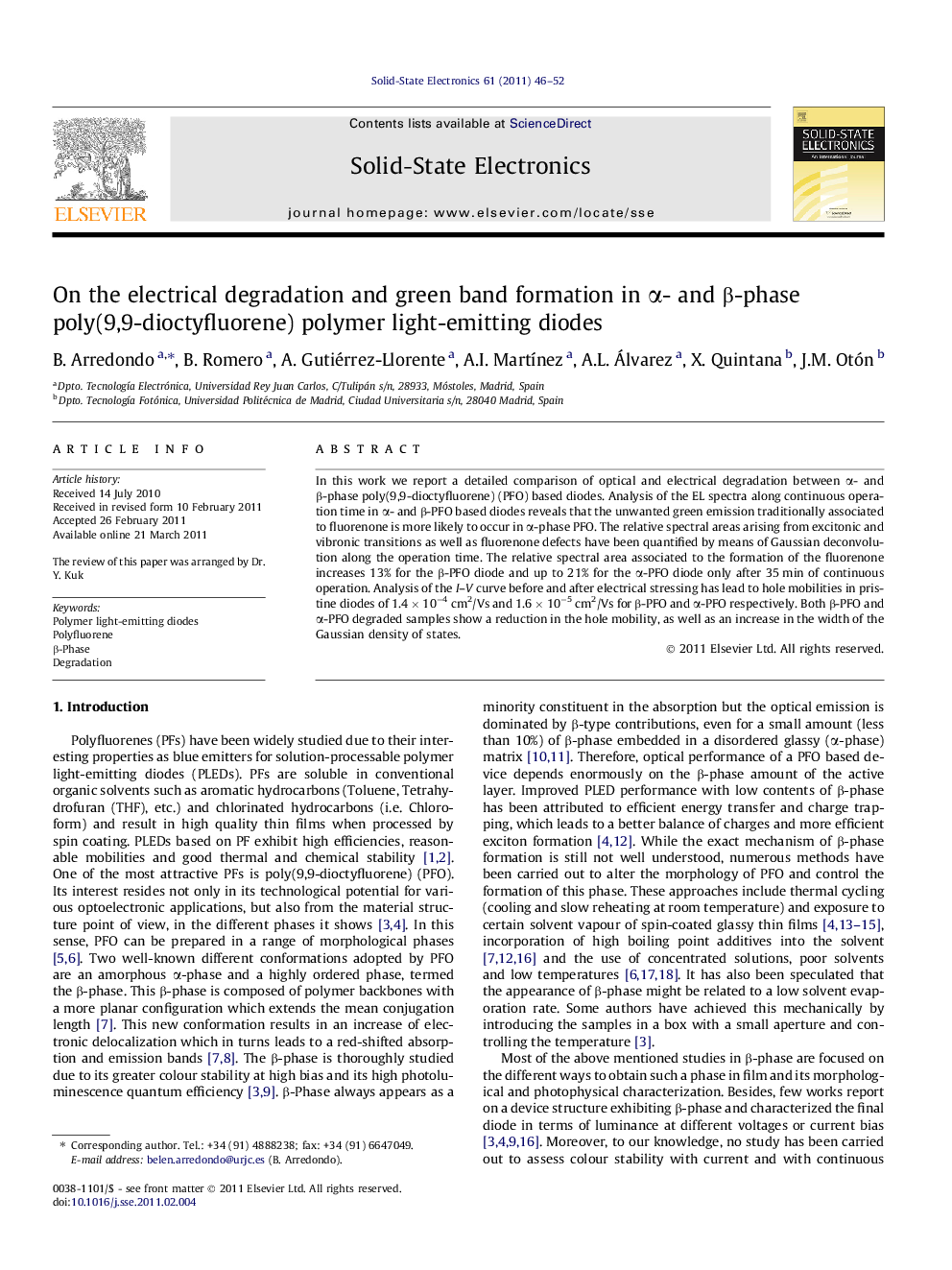| Article ID | Journal | Published Year | Pages | File Type |
|---|---|---|---|---|
| 747027 | Solid-State Electronics | 2011 | 7 Pages |
In this work we report a detailed comparison of optical and electrical degradation between α- and β-phase poly(9,9-dioctyfluorene) (PFO) based diodes. Analysis of the EL spectra along continuous operation time in α- and β-PFO based diodes reveals that the unwanted green emission traditionally associated to fluorenone is more likely to occur in α-phase PFO. The relative spectral areas arising from excitonic and vibronic transitions as well as fluorenone defects have been quantified by means of Gaussian deconvolution along the operation time. The relative spectral area associated to the formation of the fluorenone increases 13% for the β-PFO diode and up to 21% for the α-PFO diode only after 35 min of continuous operation. Analysis of the I–V curve before and after electrical stressing has lead to hole mobilities in pristine diodes of 1.4 × 10−4 cm2/Vs and 1.6 × 10−5 cm2/Vs for β-PFO and α-PFO respectively. Both β-PFO and α-PFO degraded samples show a reduction in the hole mobility, as well as an increase in the width of the Gaussian density of states.
► We report a comparison of degradation between α- and β-phase PFO based diodes. ► Green emission associated to fluorenone is more likely to occur in α-phase PFO. ► Analysis of I–V curves leads to hole mobilities higher for β-PFO than α-PFO diodes. ► Degraded samples show a hole mobility reduction and an increase in the DOS width.
